Lung Cu Flag Tower
From the city of Ha Giang, through nearly 200 km of mountainous roads with nauseating bends, you arrive at Lung Cu commune, Dong Van district, where the National Historical Monument Lung Cu Flag Tower is located.
From a distance, the Lung Cu Flag Tower stands proudly on the peak of Dragon Mountain, with the red flag and yellow star fluttering proudly in the wind.
Being both a historical monument and the sacred northernmost point of the country, for many years, the Lung Cu Flag Tower has always been a popular destination among thousands of tourists near and far.
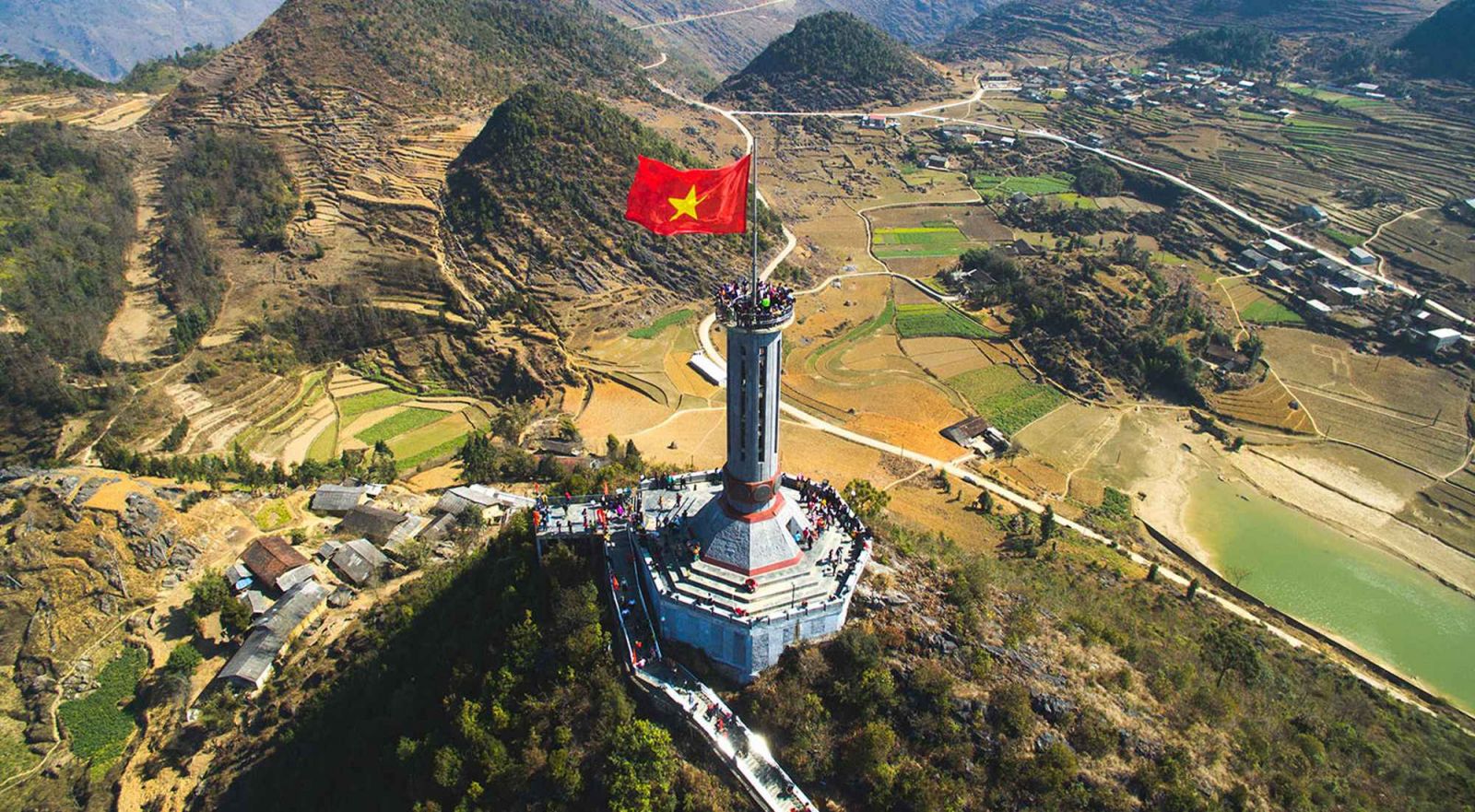
About Lung Cu Flag Tower
The Flag Tower is situated on the summit of Dragon Mountain, with an elevation of 1,468m above sea level. The total height of the Flag Tower is nearly 35m, and the flag itself spans 54m², symbolizing the 54 brotherly ethnic groups living together in harmony within Vietnamese territory. The way to the Lung Cu Flag Tower consists of a total of 839 steps, divided into 3 sections. Between these sections, there are resting pavilions for tourists to stop and enjoy the scenery.
At the base of the Lung Cu Flag Tower, there are 8 bas-reliefs made of bluestone. On these bas-reliefs are intricate carvings depicting the process of nation-building and defense by the forefathers, as well as distinctive cultures of the various ethnic communities in Ha Giang.
Above the 8 bas-reliefs, 8 bronze drums are attached, serving as both a symbol of Vietnamese culture and a reminder of the drums of King Quang Trung in the past. This serves to eternally commemorate the merits of the Vietnamese forefathers in establishing the nation for the generations to come.
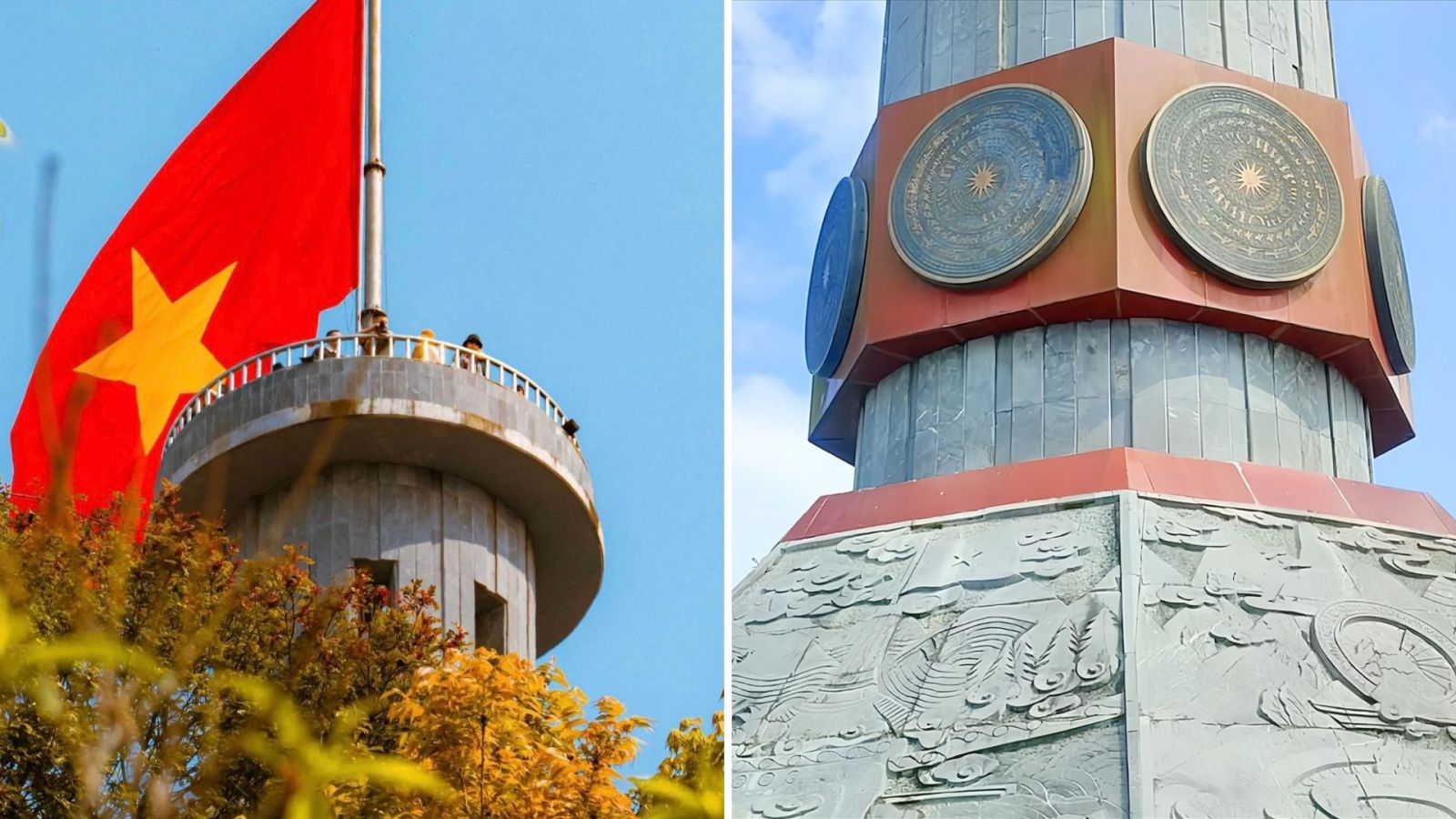
A bit of history and legend
According to historical records, the Lung Cu Flag Tower dates back to the Ly dynasty.
In ancient times, Lieutenant Ly Thuong Kiet led an army to pacify the borderlands and planted a flag on the summit of Dragon Mountain to assert the sovereignty of our nation. Since then, throughout the course of history, this borderland at the northernmost point of the country has been protected and preserved.
During the Tay Son period, recognizing the strategic importance of this borderland, King Quang Trung built a garrison here. Under the garrison, a bronze drum was placed. There would be 3 drum hits every 2 hours, echoing loudly to assert territorial sovereignty. For this reason, this land is also known as Long Co, meaning the king's drum.
In 1978, the Flag Tower was erected on the summit of Dragon Mountain. At that time, the Flag Tower was only as tall as a China Fir tree (around 12 meter tall), with a flag measuring 1.2m². To match the grandeur of the Flag Tower, the current 54m² flag was later introduced. Recognizing its profound historical significance, on November 18, 2009, the state officially designated the Lung Cu Flag Tower as a National Historical Monument.
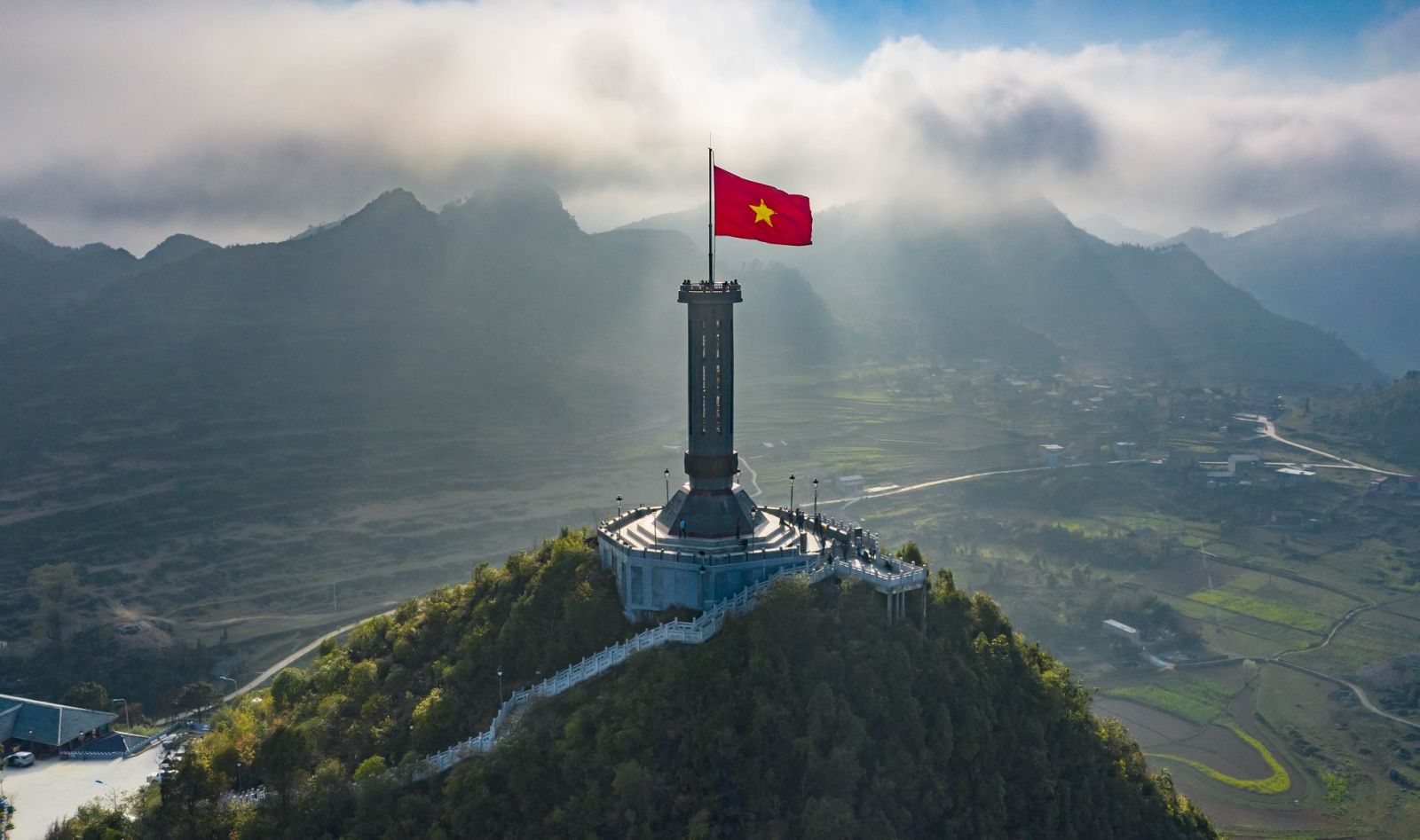
Beside the majestic history of the Lung Cu Flag Tower, there is also a fascinating legend about Dragon Mountain. Lung Cu is the homeland of various ethnic groups, with the majority being the H'Mong and Lo Lo people. Lung Cu is referred to by different names, to the H'Mong people, it’s Lung Ngo or Corn Valley due to corn being the staple crop, while the Lo Lo people refer to Lung Cu as Long Cu, meaning the land of the dragon.
According to tradition, in ancient times, a celestial dragon descended to explore the earthly realm and, captivated by the breathtaking scenery here, it landed on the mountain peak before the village, which is now known as Dragon Mountain.
Beside its love for this land, the celestial dragon also observed the extreme hardships faced by the local people, particularly the severe water scarcity. Therefore, before returning to heaven, the dragon, moved by compassion, left its two eyes at this location. These dragon eyes transformed into two freshwater lakes at the foot of the mountain. One lake belongs to Then Pa village (belonging to the H'Mong ethnic group), and the other lake belongs to the Lo Lo people. Thanks to these two freshwater lakes, the lives of the local people became less arduous.
Regardless of the weather conditions, these two miraculous lakes never run dry. In the past, the villagers used water from these lakes for daily activities and sustenance. Today, people no longer use the lake water for domestic purposes but only for irrigation.
Visiting Lung Cu Flag Tower and around
There are 839 stone steps overall. However, you can get to the top parking spot by motorbike or by electric car (available on site), so you only have to walk the last 279 steps to reach the base of the flag tower at the summit of Dragon Mountain.
As you ascend, the beauty of Lung Cu becomes increasingly mystical.
Looking down from above, you can marvel at the majestic and picturesque mountainous landscapes: the Then Pa field, spanning over 10 hectares, enveloping the entire Dragon Mountain, the trinh tuong houses with Yin and Yang-tiled roofs of the Lo Lo and the H'Mong ethnic group...
From the base of the Lung Cu Flag Tower, you’ll reach the summit ascending along 135 spiral-shaped stone steps. Standing atop the northernmost point, gazing at the vibrant red flag fluttering proudly in the sun and borderland winds, especially if you get to touch it, fills you with deep emotions and a profound sense of pride (even if you’re not Vietnamese).
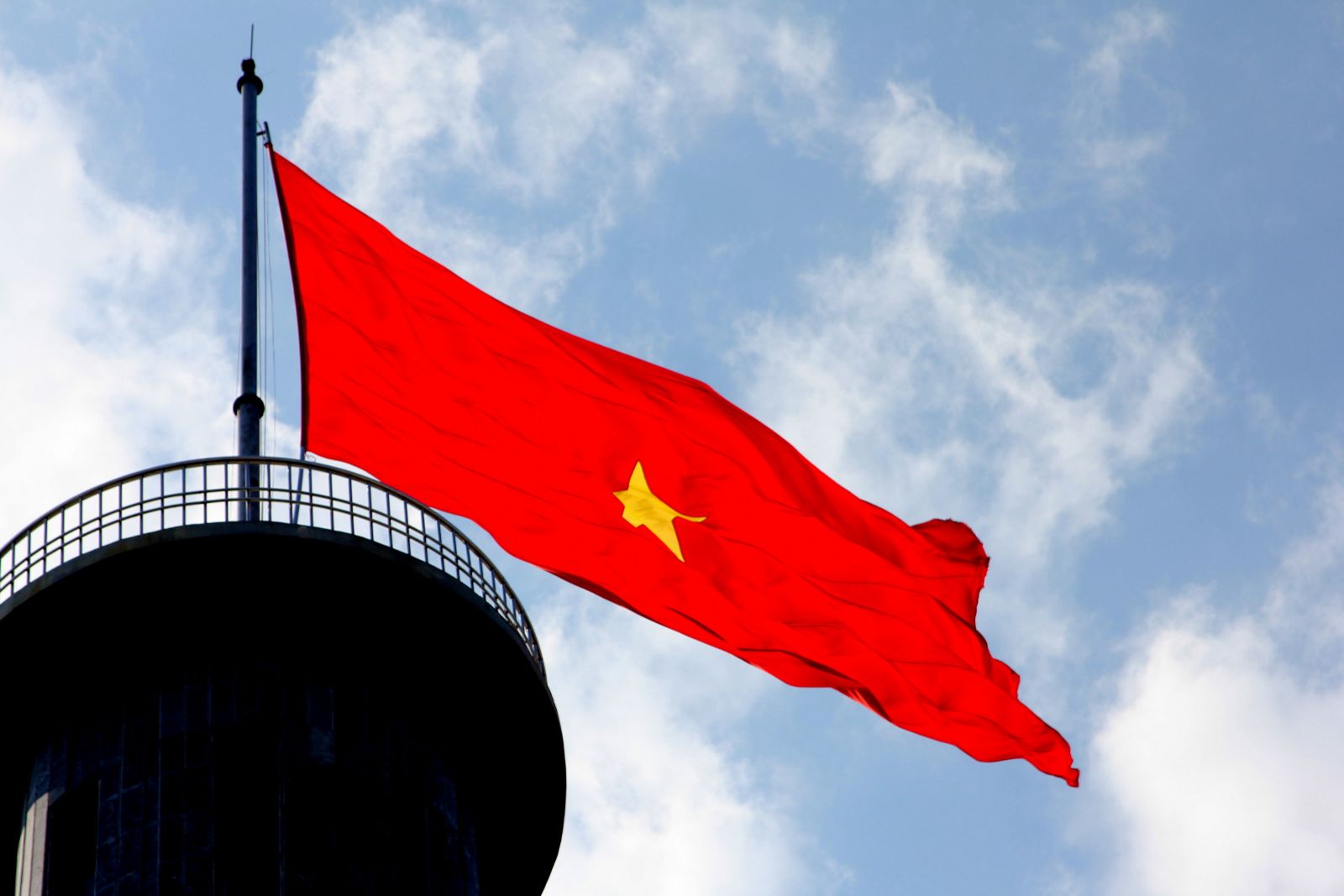
Around Lung Cu Flag Tower
Dong Van Ancient Town
Dong Van Ancient Town is an absolute must-visit if you have already explored the Lung Cu Flag Tower, which is about a 50-minute drive from Lung Cu. It’s definitely lesser known compared to Hanoi’s Ancient Quarter or Hoi An’s Ancient Town, but no less beautiful.
In the 1880s, during the French colonial period, urban planning was initiated, laying the foundation for the development of the unique and distinctive architecture. Today, that beauty remains intact. Dong Van Old Town stretches nearly 1 km, featuring around 40 adjacent ancient houses with traditional trinh tuong architecture, Yin and Yang-tiled roofs, and characteristic stone foundations. The trinh tuong houses are entirely made of stones and soil to withstand the harsh climate on the rocky plateau. The roofs are covered with thatch or tile to retain warmth in winter and create a cool space in the summer.
During the full moon, the streets are adorned with colorful lanterns.
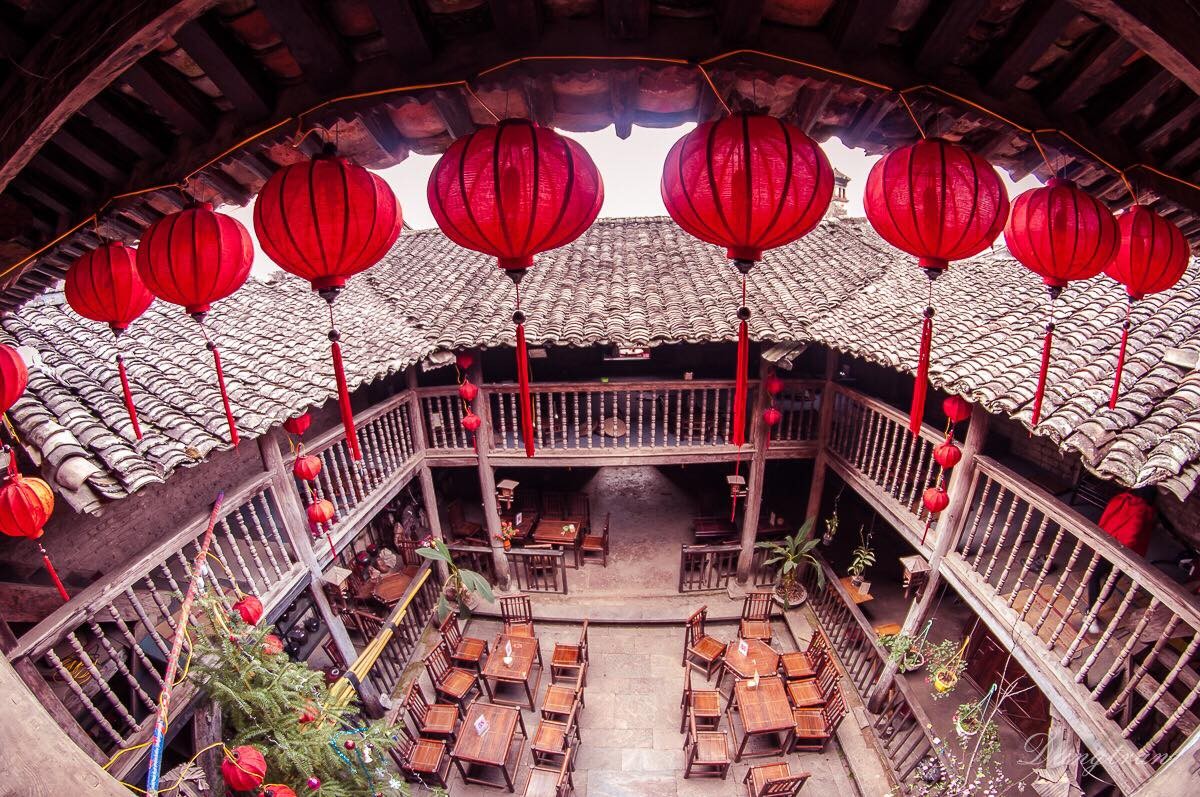
Cafe Cuc Bac
Café cuc bac (Northernmost Cafe) is located in Lo Lo Chai village, a small village right at the foot of the Lung Cu Flag Tower, less than 1 km from the Vietnam-China border.
Opened by Ogura Yasushy, a Japanese with many years living in Vietnam, the café is constructed with trinh tuong house architecture, featuring stone fences, Yin and Yang-tiled roofs, and a wooden gate. In this café, you’ll find not only the traditional Vietnamese drip coffee but also Japanese matcha green tea. Additionally, you can enjoy grilled corn, buffalo meat cooked by locals, alongside aromatic glasses of corn wine.
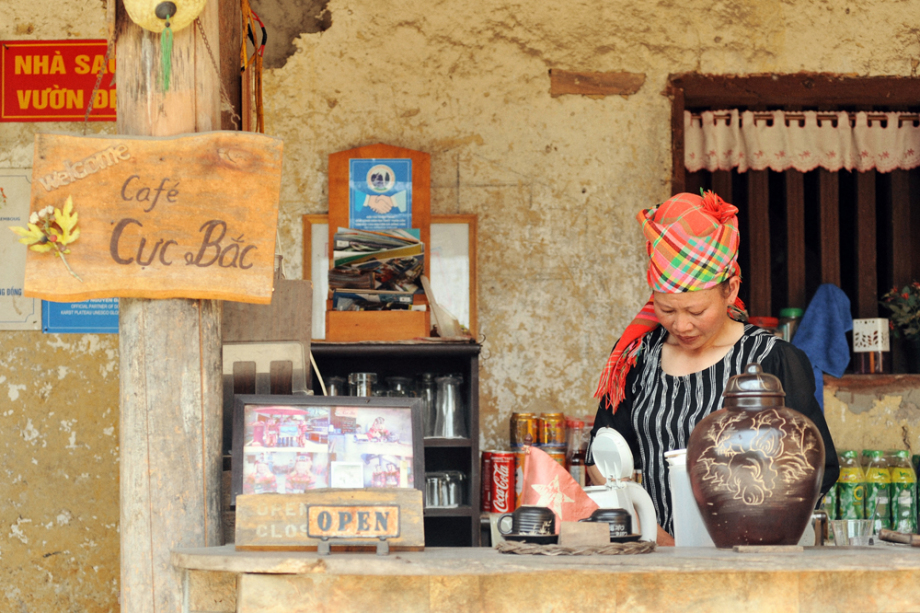
Lo Lo village
Nestled right at the foot of Dragon Mountain and just about 1km away from the Lung Cu Flag Tower, Lo Lo Chai Village is the home of both Mông and Lo Lo ethnic groups throughout the decades. Without towering buildings or modern bustling shopping centers, the cultural values of these ethnic communities on the beautiful Dong Van Karst Plateau are preserved within the village. This village possesses beautiful houses resembling those in fairytales. For those seeking a refuge from city life, Lo Lo Chai Village is an ideal destination.
Taking a stroll around Lo Lo Chai Village, you will have the opportunity to admire the distinctive trinh tuong house architecture commonly found in the Ha Giang Karst Plateau. The locals still maintain numerous traditional crafts such as woodworking and embroidery.
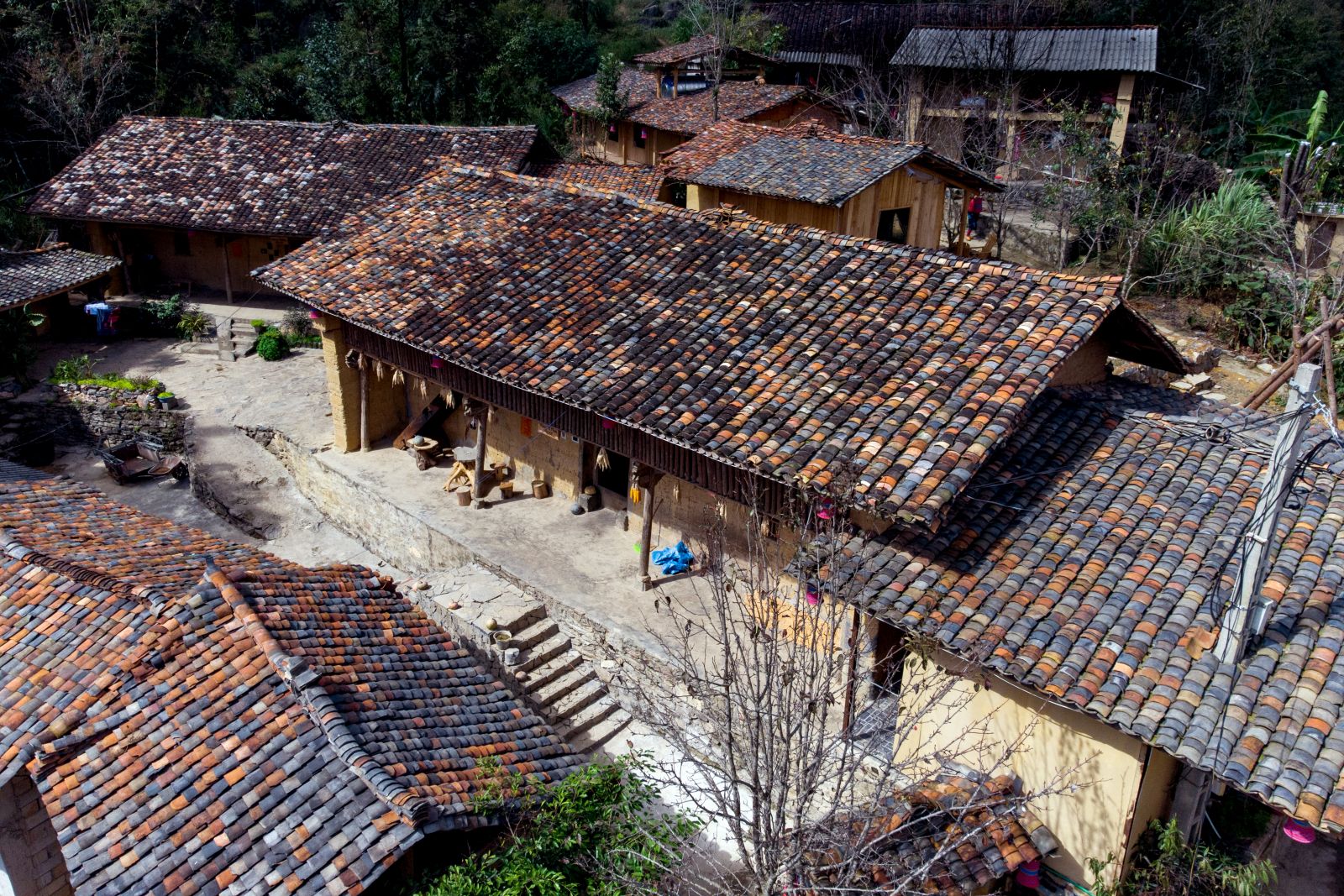
How to get there
Lung Cu is located 500 km from Hanoi and 200 km from Ha Giang city center. It is recommended to take a bus from Hanoi to the city of Ha Giang, and then rent a motorbike to reach Lung Cu. You can consider the following route: Ha Giang City - National Highway 4C - Quan Ba - Dong Van - Sa Phin - Lung Cu.
After a 6 to 7 hour ride from Hanoi to Ha Giang, spend the night in Ha Giang city before departing the next day. From the city center of Ha Giang, take National Highway 4C to reach the town of Quan Ba (officially named Tam Son Town), which is about 50 km from the city center.
From Quan Ba, continue the journey to Yen Minh town to witness the legendary pine forest. A little beyond the town, you will come across the beautiful Mien River. Then, at a crossroad, turning right will lead you to Meo Vac district, while turning left will take you straight to Dong Van. Follow that road until you reach Lung Cu.
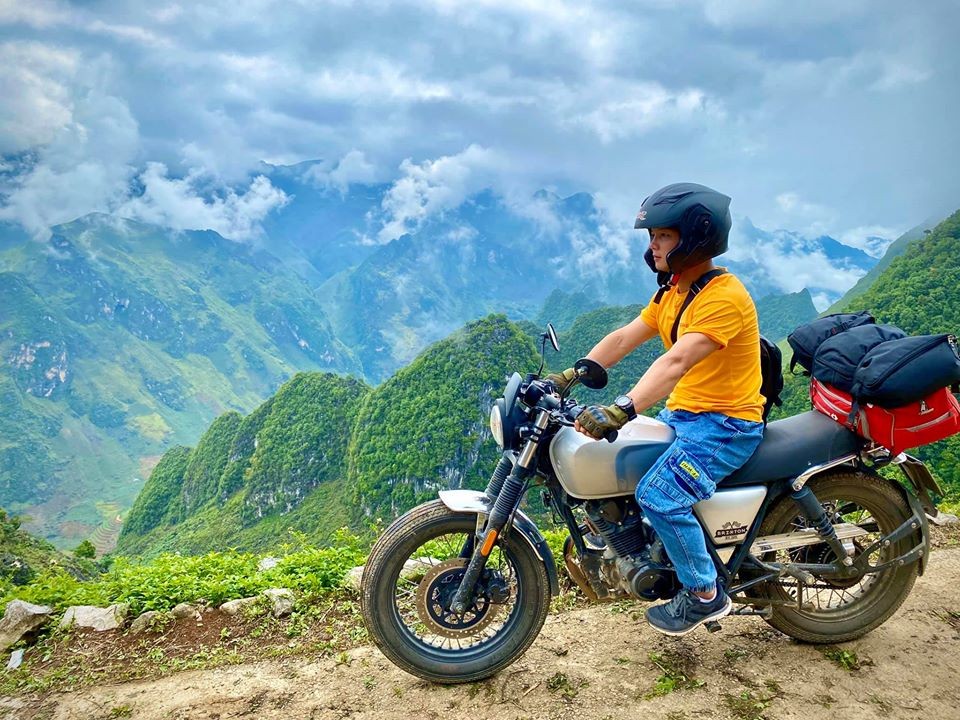
Best time to get there
January to March: During spring, flowers bloom along the roads. Pink peach blossoms, white plum blossoms, and yellow rapeseed flowers adorn the border landscape.
May: This is the watering season, when the local farmers go down to the fields to sow seeds for the new crop. Visiting during this time, you will be able to admire the peaceful scenery as they cultivate rice on the terraced fields.
June to August: This period is the dry season in Lung Cu, suitable for sightseeing.
October to December: In the last months of the year, Lung Cu enters the buckwheat flower season. Besides admiring the Flag Tower, you can also enjoy the scenery and take Instagram-worthy photos in the buckwheat flower fields at the foot of the mountain.




.jpg)


